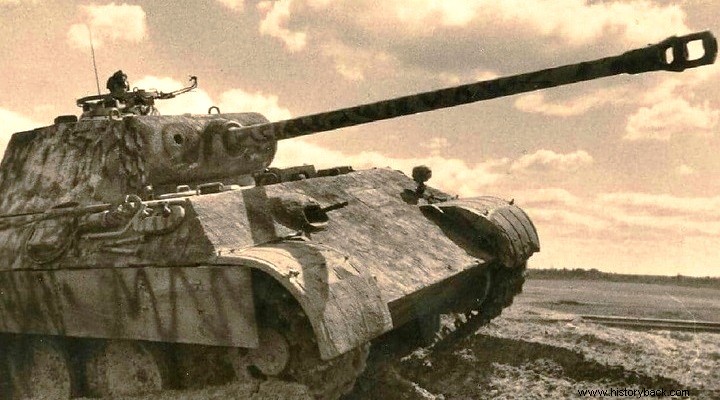
On October 29, 1944 the Soviets launched their attack on Budapest. By December 24, the city was surrounded. The Germans and their Hungarian allies attempted to "break" the siege but failed. The most important efforts to lift the siege of Budapest are part of the operations codenamed "Konrad", the most important of which was "Konrad III".
The main attack would be launched by the German 6th Army, under General Hermann Balk , spearheaded by the SS Panzer Corps IV and the III Panzer Corps. The corps had the 3rd Panzer Division (MPa) SS "Totenkopf" and the 5th MPa SS "Wiking" and a heavy tank division. The III Spa had the 1st and 3rd MPa.
Facing the German 6th Army, were the forces of the 3rd Ukrainian Front under Marshal Tolbukhin. Opposite the IV Spa SS was the Soviet 4th Armored Army (TTS).
Surprise Attack
The Germans managed to achieve tactical surprise by attacking on January 18, 1945. The Germans threw about 400 tanks into the battle. The Soviet 4th Infantry Division was particularly stressed from the previous battles and had about 250 operational tanks. The Soviets had not assumed the presence of the IV SS Division against them. Consequently, the German attack developed favorably.
In less than two days the two SS BAs had crushed the Soviet 4th SS, encircling two Soviet army corps (18th Panzer and 130th). A Soviet counterattack to liberate them was crushed by the Germans.
However, the Germans did not have sufficient infantry forces to "seal" the surrounded Soviets who eventually managed to escape. Nevertheless, the German attack had caused a 30 km wide breach in the Soviet lines.
With the support of the air force, the Germans continued the advance and essentially opened the road to Budapest, then the capture of the city of Zekefehevar on January 22. Tolbukhin was forced to send strong forces to stop the Germans from reaching Budapest.
The Soviet marshal threw the 5th Cavalry Corps to plug the breach. The corps had 100 tanks, but most importantly hundreds of artillery, field and anti-tank guns and managed to stop the pace of the German advance. However, this was also due to the losses, fatigue and above all the lack of fuel that the Germans were facing.
The Soviets also threw their 1st Motorized Corps into the fray, further delaying the German advance. Nevertheless, on January 26, the 3rd SS SS was only 25 km from Budapest, while the 1st SS had established radio contact with the besieged.
Failure
But that's where it all ended. Lacking sufficient infantry, unable to cover his armored points, considering losses and fueling difficulties, but also facing more and more Soviet forces, Balk gave the order to retreat , incurring the ire of SS IV SS commander Herbert Guille.
Balk was right. But the person responsible for the failure was none other than Hitler. Despite the recommendations of his generals, he had refused to participate in the attack and the 2nd Panzer Army . If Balk had been reinforced the 3rd Ukrainian Front would have been irretrievably defeated and Budapest would have been liberated.
On 27 January Tolbukhin launched a counterattack aimed at encircling and destroying the IV SS SS, just as Balk had predicted. However the Germans held out, although the IV Spa SS was left with only 50 operational tanks. Indeed an entire Soviet army corps, the 23rd Armored, was disbanded in just one day, losing over 100 tanks.
Nevertheless, the Soviet numerical superiority was so overwhelming that the Germans were forced to cede almost as much ground as they had captured by February 1st. Budapest's fate was sealed.
